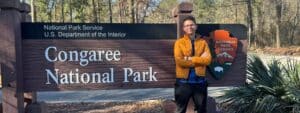By Paul Rogers
Roughly 75 percent of all the land in the Bay Area is either permanently protected in parks or open space, or at low risk of development because it is zoned for farming or other rural uses.
But 322,000 acres — an area 12 times the size of the city of San Francisco — remains threatened by development over the next three decades, with hot spots in eastern Contra Costa County and around Gilroy, Morgan Hill, Livermore and Vacaville, according to a new report out Tuesday from the Greenbelt Alliance, an open space preservation group.
The Bay Area almost certainly has more parks, farmland, beaches and other open spaces than any other major urban area in the United States. That’s the product of 100 years of advocacy by park lovers, hikers and environmental groups.
And while Bay Area residents regularly support tough zoning, and new fees and taxes at the ballot box for open space, the difficult economy over the past five years has meant less money to maintain parks — and rough times raising money to buy more land.
“We’ve had a lot of success in this region protecting our greenbelt,” said Jeremy Madsen, executive director of the Greenbelt Alliance. “We need to be proud of that, but there is a lot still to do, not only in stopping sprawl, but also in investing and stewarding land that’s already protected.”
When counties are ranked by the acres they have permanently protected in parks, wildlife refuges and open space preserves, the Bay Area’s largest county, Santa Clara County, is first, with 229,800 acres, according to the report.
Next is Marin, with 185,400 acres; Sonoma with 171,200; Napa with 122,700; Contra Costa with 119,100; San Mateo with 111,000; Alameda with 106,000; and Solano, with 57,000 acres.
That may come as a surprise to Bay Area residents who see Silicon Valley as a poster child for Los Angeles-style sprawl. But most of the large developments that paved over orchards and farmland ended by the 1970s with tougher zoning. And over the past decade, land trusts such as the Nature Conservancy and Peninsula Open Space Trust have bought tens of thousands of acres in the Mount Hamilton area, around Henry Coe State Park, and in the foothills south of San Jose, preserving hillsides, ranches and farms.
“There’s been a dawning awareness that there are some spectacularly beautiful lands at risk just 15 or 20 minutes south of San Jose,” said Walter Moore, president of the Peninsula Open Space Trust, in Palo Alto.
In the East Bay, a historic milestone came in 2008 when voters in Contra Costa and Alameda counties overwhelmingly approved Measure WW, a $500 million bond act to provide new funding for the East Bay Regional Park District.
The district, founded in 1934, already has 112,000 acres preserved in 65 parks. With the new funding, it is adding lands. Further, roughly 6,000 acres of meadows and other grazing lands are being preserved by the Contra Costa Water District as part of its project to enlarge Los Vaqueros Reservoir near Brentwood.
“Contrary to what’s happening in other parts of the state, combined with the recent real estate downturn, there have been some amazing gains in open space protection in the East Bay,” said Ron Brown, executive director of Save Mount Diablo in Walnut Creek.
When counties are compared by how much of their land area is protected in parks and open space preserves, Marin comes in first, with 55.6 percent; followed by San Mateo at 38.6 percent; Santa Clara at 27.7 percent; Contra Costa at 25.8 percent; Napa at 25.4 percent; Alameda at 22.4 percent; Sonoma at 16.9 percent and Solano at 10.8 percent.
Brown and Moore both noted that funding is becoming a significant issue in many parts of Northern California. State bonds approved by voters in years past to buy new parkland and build playgrounds are nearly all spent. And Gov. Jerry Brown plans to close 70 state parks by July 1 to save $22 million toward balancing the state budget.
Although East Bay regional parks won passage of its bond measure, other agencies, like the Midpeninsula Regional Open Space District and the Santa Clara County Open Space Authority, are running low on funding to buy new parks and will ask voters in the next few years for more to continue their efforts.
Tuesday’s report noted that of the 4.4 million acres in the nine counties around the Bay Area, 1.1 million are in parks and open space preserves. Another 2.2 million are protected through zoning for farms, hillsides and rural development. That leaves 788,000 acres developed in urban areas and 322,000 acres of open land at risk of development over the next 30 years, with a quarter of that at risk in the next 10 years.
Developers say the battle is done.
“The era of the mega-master-planned community in the Bay Area is largely over. Politically it is just too difficult,” said Paul Campos, senior vice president of the Building Industry Association of the Bay Area.
Campos said while developers support building “in-fill” homes, condominiums and townhouses in existing neighborhoods and near transit projects, as environmentalists want, enough people still want to buy affordable single-family homes with yards that they are willing to commute long distances from Tracy and other Central Valley towns.
But Madsen, of the Greenbelt Alliance, said there are lots of single-family homes for sale in the Bay Area.
“What we need to build now are the choices for people who want something else — townhomes, condos, rental property in town to meet the demands of empty nesters, young people in their 20s and families with kids who want to live an urban lifestyle,” he said.



